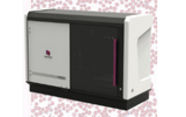Optimizing Cancer Care through Strategic Selection of NGS Testing Platforms: Balancing Panel Size with DNA Input Challenges
sponsored by Labcorp
Next-generation sequencing (NGS) is a cornerstone of precision oncology, providing critical insights for the accurate diagnosis and tailored treatment of various cancers. As NGS and computational technologies continue to advance, the adoption of large, targeted panels (>500 genes) and whole-exome sequencing (WES) in molecular laboratories is on the rise. However, the success of NGS testing is fundamentally linked to the quantity and quality of input DNA. Large panels demand higher amounts of DNA, and insufficient quantities often result in Quantity Not Sufficient (QNS) outcomes, leading to delays in reporting and negatively affecting patient care.
Small biopsies and cytology samples, often characterized by low tumor cellularity, pose a significant challenge for successful NGS, as they typically yield lower amounts of DNA/RNA. A key advantage of in-house NGS testing is the ability to utilize platforms that accommodate low-input DNA, providing viable alternatives when comprehensive panels are not feasible.
In this webinar, we present comprehensive data on the success and failure rates of WES-based external testing versus in-house NGS options. We further evaluate the impact of these testing strategies on molecular-informed treatment plans and clinical outcomes. Our findings reveal that in-house NGS testing is associated with a significantly lower QNS rate. Notably, amplicon-based, small-targeted NGS panels (~50 genes) designed to work with low-input DNA offer critical therapeutic insights for patients whose samples might otherwise be deemed QNS for comprehensive testing. Furthermore, in-house large targeted panels (~500 genes) are capable of identifying actionable alterations, including targets for FDA-approved therapies and the majority of targets relevant to clinical trials in specific tumor types.
Our results underscore the importance of strategically selecting NGS testing approaches based on tissue availability and disease type. By incorporating flexible, alternative NGS platforms, we can enhance the success rate of NGS testing, support informed clinical decision-making and ultimately improve patient outcomes.
Webinar Learning Objectives
1. Analyze the advantages and limitations of different NGS approaches, including whole-exome sequencing (WES) and in-house targeted panels, in terms of their impact on genomic profiling accuracy, turnaround time, and clinical relevance.
2. Demonstrate how small amplicon-based NGS panels specifically designed for low DNA/RNA input from small biopsies and cytology samples can reduce the incidence of Quantity Not Sufficient (QNS) outcomes, thereby improving the success rates of genomic testing.
3. Develop a framework for selecting the most appropriate NGS testing platform based on tissue availability, tumor type, and clinical objectives, ensuring that patients receive the most relevant and actionable genomic data for informed treatment decisions.




















